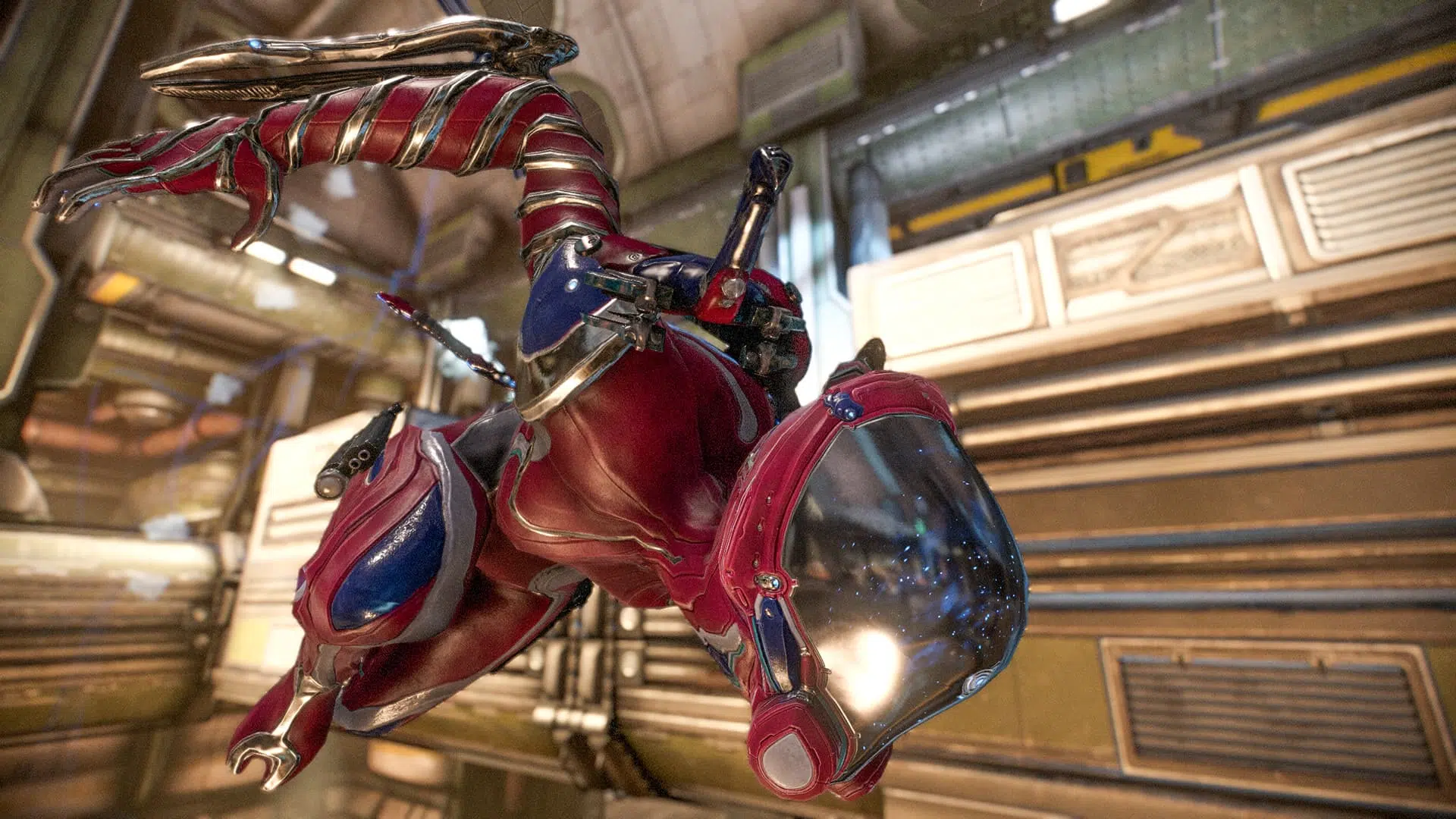Title: Wolfenstein II: The New Colossus
Developer: MachineGames
Publisher: Bethesda Softworks
Released: October 27, 2017
Platform Reviewed: PlayStation 4
Platforms Available: PlayStation 4, PlayStation 5, Xbox One, PC, Nintendo Switch
Article Reading Time: 13 minutes
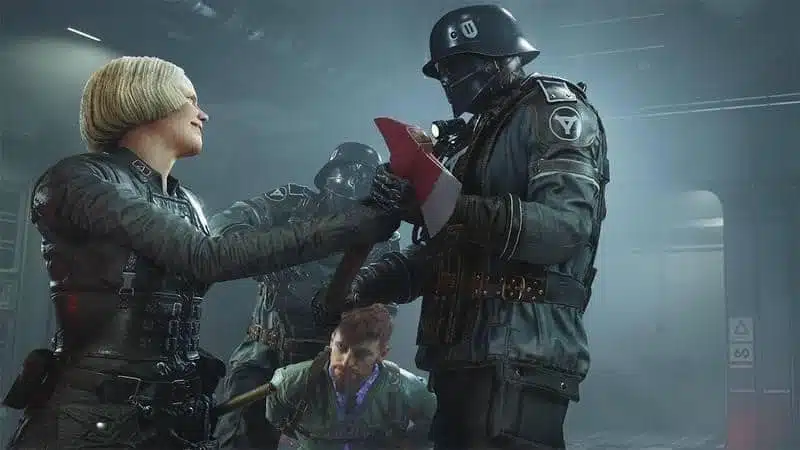
Rise of Resistance: The First Strike
“Wolfenstein II: The New Colossus” is a first-person shooter that truly stands out among its peers. The game’s powerful portrayal of rebellion and courage is more than just a continuation of a story; it represents a paradigm shift in digital storytelling and gameplay. Set in a world where the Nazis emerged victorious in World War II, we follow the story of B.J. Blazkowicz as he wages war against a Nazi-occupied America.
The game’s storytelling is captivating, and the graphics are stunningly realistic, immersing the player in a world ravaged by war. The game’s sound design is also excellent, with an incredible score that complements the game’s dark and gritty atmosphere.
But the game’s real strength lies in its gameplay. The shooting mechanics are tight and responsive, and the variety of weapons and upgrades available to the player allows for various playstyles. The game also offers several nonlinear levels, each with multiple paths to victory, encouraging experimentation and replayability.
Overall, “Wolfenstein II: The New Colossus” is a game that represents a new gaming era. It’s a game that offers a compelling story, stunning graphics, incredible sound design, and engaging gameplay. If you’re a fan of first-person shooters, this is a game that you won’t want to miss.
The game opens with a resounding defiance. It picks up seamlessly from “The New Order” but quickly establishes its identity. You’re not just revisiting familiar ground; you’re stepping into a revamped battlefield, where every corridor and open space feels like a call to arms. The game’s narrative thrusts you into a relentless pursuit of freedom, setting a tone that resonates with urgency and purpose.
From a gameplay standpoint, “The New Colossus” elevates the FPS experience. The combat is an exhilarating blend of strategy and reflex. Each weapon in your arsenal isn’t just a tool for destruction; it’s a means to challenge the oppressive regime. The game demands more than accuracy; it requires tactical acumen, urging players to adapt and think like a guerrilla warrior.
The game’s environment plays a significant role in shaping your combat strategies. The level design is meticulous, creating visually stunning and strategically complex spaces. It’s a world that demands exploration and rewards cunning. The attention to detail in each level underscores the game’s commitment to delivering an immersive and challenging experience.
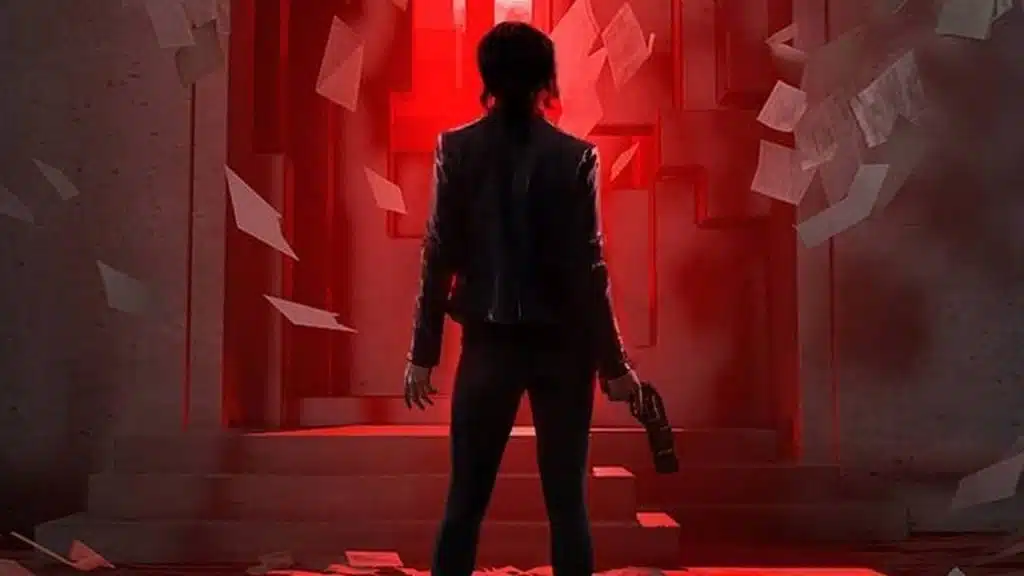
Blazkowicz’s Battlefront: The Heart of Rebellion
Wolfenstein II: The New Colossus is a video game that immerses players in an alternate reality where Nazi Germany won World War II and rules over the United States with an iron fist. The game’s story is centered around B.J. Blazkowicz, a former soldier who becomes the leader of the resistance against the Nazi regime. The narrative is a crucial element of the game, as it helps establish its themes and core message about the importance of freedom and the fight against tyranny.
The game is set in the 1960s and features a wide range of locations, from Manhattan’s ruins to New Orleans’s streets. The game’s environments are meticulously crafted to create a sense of immersion and realism, with detailed textures, lighting, and sound design. The game also features diverse characters, each with their own backstory and motivations.
As players progress through the game, they will encounter a variety of enemies, including Nazi soldiers and robotic dogs. The game’s combat system is designed to be fast-paced and fluid, with a wide range of weapons and abilities that players can use to take down their enemies. In addition to traditional weapons like guns and explosives, players can also use a range of melee attacks and special abilities, such as dual-wielding weapons.
The game’s story is told through a series of cutscenes and in-game dialogue, with B.J. Blazkowicz serving as the player’s avatar throughout the game. Blazkowicz is a complex character with a tragic backstory and a deep commitment to the fight against Nazi tyranny. As players progress through the game, they will learn more about Blazkowicz’s past and his motivations, as well as the wider struggle against the Nazi regime.
Overall, Wolfenstein II: The New Colossus is a powerful, immersive game that explores complex themes and delivers memorable gameplay experience. With its detailed environments, diverse cast of characters, and well-crafted story, the game is a must-play for fans of first-person shooters and narrative-driven games alike.
In this chapter, the game reveals its narrative prowess. Storytelling is not just about moving from one mission to the next; it’s about understanding war’s emotional and psychological toll. Blazkowicz’s interactions with other characters are more than mere dialogues; they are windows into a world wearied by conflict yet unbroken in spirit. Each character you encounter adds depth to the narrative, bringing their own stories of resilience and defiance.
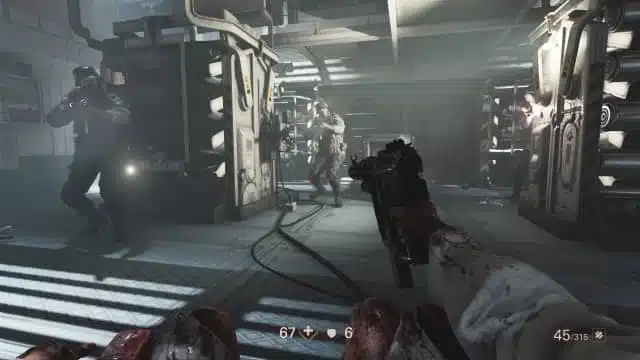
The game’s setting in an alternate history where Nazis won World War II is not merely a backdrop. It’s a living, breathing world filled with oppression, resistance, and echoes of a possible future. The meticulous attention to detail in this dystopian America makes every location more than just a combat stage. It’s a narrative device that tells its story, from the graffiti on the walls to the whispered conversations of its downtrodden inhabitants.
Guerrilla Tactics: Clash and Conquer
I understand that you’re a fan of “Wolfenstein II: The New Colossus,” and I agree with you. This game is truly a masterpiece in the world of first-person shooters. It’s a game that expertly blends fast-paced action with tactical depth. With each bullet and every move, you can feel the intense passion that the developers put into this game. You’re not just playing a game; you’re experiencing a work of art.
The game innovates with its health bar system for enemies, a feature that adds a new layer of tactical complexity. Unlike traditional shooters, where enemies fall in a predictable pattern, “The New Colossus” demands a more systematic approach. Each enemy type presents a unique challenge, requiring players to adapt their strategy and weapon choices. While occasionally feeling forced, this system adds to the game’s dynamic nature, compelling players to be more than just sharpshooters.
Speaking of weaponry, “The New Colossus” excels in its arsenal. Each gun, from the trusty shotgun to the futuristic laser cannon, is a masterpiece in both design and functionality. The weapons feel robust and impactful, with each shot delivering a satisfying audio-visual punch. The game elevates weapon handling to an art, allowing players to experiment with different styles, from stealthy takedowns to full-blown assaults.
The level design in “The New Colossus” marks a significant departure from the linear pathways of its predecessors. The game takes a more open approach, allowing players to explore and engage enemies in diverse, sprawling environments. This change brings a refreshing depth to the gameplay, making each encounter a unique tactical puzzle. The game’s levels are designed with intricate pathways and hidden areas encouraging exploration and experimentation. The game skillfully balances the freedom of exploration with the need for structure, ensuring that players have clear objectives while still being able to explore and discover at their own pace.
However, the openness of the game world is not without its challenges. The sprawling maps can sometimes lead to repetitive encounters, as players may find themselves revisiting areas they’ve already explored. To counter this, the game introduces new enemies and obstacles that keep the gameplay engaging and varied. The game’s open-ended structure also allows players to approach encounters differently, using stealth, brute force, or a combination of both to overcome obstacles.
Overall, “The New Colossus” delivers a fresh and engaging gameplay experience, thanks in large part to its innovative level design. The game’s open-ended structure allows players to explore and experiment while providing a clear sense of purpose and direction. The levels are beautifully designed, with intricate details and hidden secrets encouraging players to explore every nook and cranny. Though it may have a few shortcomings, “The New Colossus” is a standout title that will delight fans of the series and newcomers alike.
In essence, “Wolfenstein II: The New Colossus” stands well in innovation in the FPS genre. Its gameplay is a carefully crafted blend of action and strategy, delivering an experience that is both exhilarating and intellectually stimulating. The game pushes players to think like guerrilla fighters, constantly adapting and overcoming in the face of overwhelming odds.
Labyrinth: Designing Oppression
In “Wolfenstein II: The New Colossus,” the level design transcends traditional expectations, offering a fresh perspective on engagement and exploration. Gone are the days of the classic linear progression through corridors peppered with enemies. Instead, the game introduces a labyrinthine design that mirrors the complexities and nuances of a dystopian world under Nazi occupation.
The environments in “The New Colossus” are meticulously crafted, creating a sense of place that is both immersive and oppressive. Each location is more than a battleground; it’s a narrative piece, telling the story of resistance and tyranny. The attention to detail in these environments is not just about aesthetic appeal; it’s about immersing the player in a world where every alley, room, and open space has a story.
This shift from linear to more open-ended environments also brings a new tactical dimension to the game. Players must navigate these spaces thoughtfully, using the environment to their advantage. The design encourages exploration, allowing players to uncover hidden paths, resources, and strategic vantage points. However, this freedom comes with its challenges. The expansive maps can sometimes lead to repetitive gameplay as players revisit areas to complete various objectives.
Despite these challenges, the level design in “The New Colossus” is great. It’s a bold move away from the conventional, offering players a world that’s not just to be traversed but experienced. The game successfully balances the thrill of discovery with the tension of survival in a hostile world, making each level a unique piece of the larger narrative puzzle.
Warriors’ Evolution: Allies and Adversaries
In “Wolfenstein II: The New Colossus,” character development is more than a narrative embellishment; it’s a crucial component of the game’s immersive experience. The game showcases a rich tapestry of characters, each contributing to the overarching narrative of resistance against tyranny.
The game’s storyline revolves around the character of B.J. Blazkowicz, who transforms a battle-hardened soldier to a symbol of rebellion, providing an authentic and compelling narrative. The character’s journey through the game is fraught with personal struggles and moral dilemmas, which reflect the player’s progression. Blazkowicz’s interactions with his allies and adversaries are carefully crafted, adding depth to his character and making him a relatable figure embodying the spirit of defiance.
The other characters in the game’s supporting cast are equally dynamic, with each character, including resistance fighters and high-ranking Nazis, intricately crafted with their backstories and motivations. They are not just bystanders in Blazkowicz’s story but active participants in the fight against oppression. Their tales of courage and resilience add depth to the narrative, providing context to the player’s actions.
The development of these characters mirrors the player’s experience in the game. As players navigate through challenges, they witness the growth of these characters, from inexperienced rookies to battle-hardened warriors. This alignment of character progression with gameplay expertise is a narrative strategy that deepens the player’s engagement with the story.
The character development in “Wolfenstein II: The New Colossus” is a testament to the game’s narrative strength. The characters are not merely cogs in the machine of storytelling; they are the heartbeat of the game, driving the narrative forward and making the player’s journey through this dystopian world both meaningful and memorable.
Rebel Rhythms: Bongas of Anarchy
In “Wolfenstein II: The New Colossus,” the sound design and soundtrack are instrumental in crafting an immersive experience. The game’s auditory landscape is not just an accompaniment; it’s a vital component that enhances the narrative and gameplay.
The soundtrack of “The New Colossus” is a particularly memorable aspect, especially for enthusiasts of the era’s music. The game features German versions of world-famous and local songs from the 1980s, creating a nostalgic and fittingly rebellious auditory backdrop. This choice of music is not merely for ambiance; it’s a narrative tool that deepens the player’s immersion in the game’s dystopian world.
Beyond the music, the sound design in “The New Colossus” is a triumph. Every gunshot, explosion, and environmental sound is crafted with meticulous attention to detail. The weapons sound powerful and satisfying, making each encounter impactful and visceral. The auditory feedback from the environment, whether the echo of footsteps in a deserted hall or the distant rumble of warfare, adds realism to the game world.
This exceptional sound design extends to the voice acting as well. The characters’ voices bring depth and authenticity to their personalities, enhancing the overall narrative experience. The dialogue is not just heard; it’s felt, contributing to the story’s emotional weight.
In summary, the sound design in “Wolfenstein II: The New Colossus” is a standout feature that significantly contributes to the game’s immersive quality. It complements the visual and story elements perfectly, creating an experience that is both audibly rich and emotionally resonant.
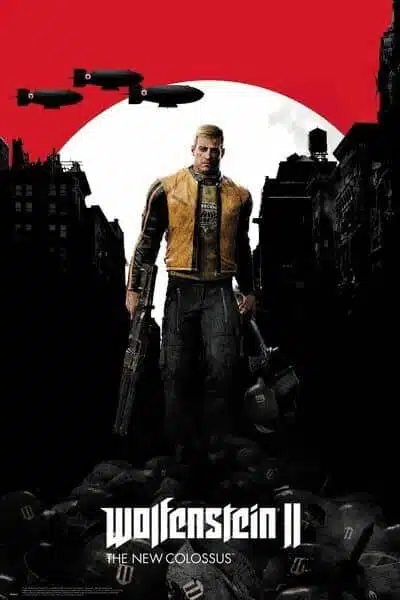
Final Assault: Beyond the Frontlines
“Wolfenstein II: The New Colossus” is a landmark in the landscape of first-person shooters, a game that masterfully balances innovation with the cherished traditions of its storied franchise. In this final chapter of our review, we look beyond the individual elements to understand the game as a cohesive whole.
Much like its characters, the game navigates through a terrain of contrasts – blending the familiar with the unexpected, the traditional with the innovative. It’s a title that redefines what a narrative-driven shooter can be, pushing the boundaries of the genre while staying true to its roots. The world of “The New Colossus” is a carefully constructed dichotomy, where the horror of its dystopian setting is juxtaposed against moments of genuine human connection and resilience.
Please find below a revised version of the text that maintains its original meaning while enhancing its fluency and coherence for better readability:
The gameplay experience in “The New Colossus” perfectly blends chaos and strategy, where each bullet and tactic holds significant weight. Players are challenged not just in their shooting skills but also in their ability to adapt and think on their feet. This dynamic gameplay reflects the game’s core narrative theme, the relentless fight against oppression.
Regarding visuals, “The New Colossus” is a testament to the series’ evolution, showcasing meticulous attention to detail and a commitment to immersive world-building. The game’s environments are not just mere backdrops for the action; they are integral to the storytelling, reflecting the oppressive regime and the resistance fighting against it.
To summarize, “Wolfenstein II: The New Colossus” is a fantastic continuation of a beloved series; it’s a bold step forward, a game that is unafraid to evolve and challenge players in new ways. It’s a game that resonates with the times, offering a thrilling adventure and a reflective commentary on tyranny, resistance, and the human spirit. And much better than its successor, Wolfenstein: Youngblood.
Purchase Wolfenstein II: The New Colossus at:
- Bethesda Website: Wolfenstein II: The New Collossus – Bethesda Official Page and Blog
- PlayStation Store: Wolfenstein II: The New Colossus – PlayStation Store
- Xbox Store: Buy Wolfenstein II: The New Colossus | Xbox
- Steam: Wolfenstein II: The New Colossus on Steam
- Nintendo eShop: Search for “Wolfenstein II: The New Colossus” on the Nintendo eShop
- GOG: Find Wolfenstein II: The New Colossus on GOG







